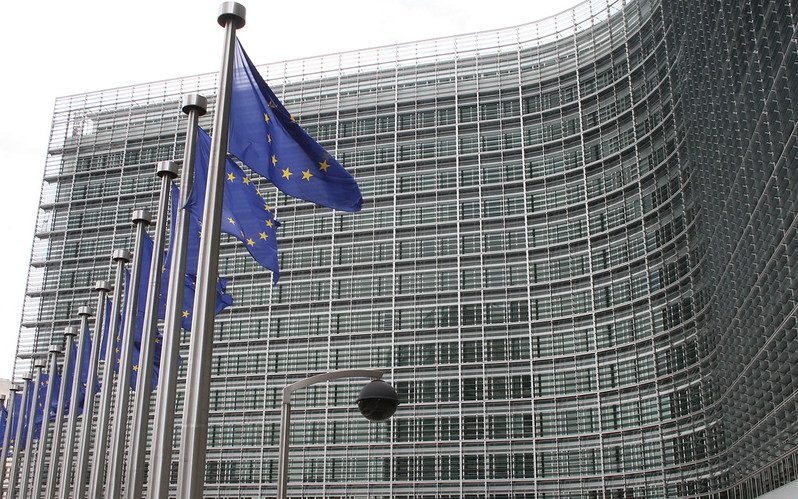This essay was initially written as part of an EU law exam at University Leiden.
Introduction
The main goal of European Union (EU) competition law is not only to establish but also preserve the correct and fair functioning of the European single market (European Commission, 2011; European Parliament, 2020).1 As early as 1957, the Treaty establishing the European Economic Community (EEC) enshrined the objective of creating “a system ensuring that competition in the common market is not distorted“ (Article 3f) (EurLex, 1957; European Court of Auditors, 2018). The EEC Treaty codified for the first-time antitrust rules in Articles 85-90 and state aid rules in Articles 92-94. Certain anti-competitive practices between and by companies and certain state aid were thus incompatible with the single market and prohibited (EurLex, 1957). The competition rules also reflected the importance of market integration (Moisejevas; Novosad, 2013). The underlying notion was that the effective functioning of the single market depends not only on the free movement of goods, services, persons and capital, but also the protection of openly competitive markets. Cartels, the abuse of a dominant position in the market, as well as certain state aid, could also have a negative impact on the single market (Van Cleynenbreugel, 2017). The merger rules introduced in 1990 also took account of the Single European Act introduced a few years earlier and the changing market conditions associated with it (European Commission, 2010).2
However, in recent years, the issue of preserving the single market through competition rules has come to the fore due to increasing foreign competition. In the context of merger control, the planned takeover of the French transport firm Alstom by the German technology company Siemens in particular has given rise to a debate. The aim was, on the one hand, to create a “European industrial champion“ by combining the respective rail divisions in order to become more competitive globally. On the other hand, the companies wanted to strengthen the single market against the backdrop of the possible entry of a Chinese competitor and the associated (anticipated) restrictions on competition. However, the European Commission prohibited the merger on consumer protection grounds. This not only earned the Commission plenty of criticism, but raised two questions in particular: should the Commission increasingly examine and emphasize, on the one hand, the extent to which EU companies already operate globally and, on the other hand, the extent to which foreign competitors could potentially distort the single market? Moreover, should the Commission actively address industrial policy in its merger assessment, thus making it easier to create a “European industrial champion“? I will answer these two questions in the essay by also taking a look on the proposed amendments of the merger rules.
Functioning of the merger rules
Originally introduced in 1990 (Levy , 2004)3, the Merger Regulation was fundamentally amended in 2004 by the EC Merger Regulation. The Merger Regulation 2004 forms the regulatory framework for the systematic review of mergers, acquisitions and certain joint ventures in the European Economic Area (EEA)4 (collectively referred to as “concentrations“) (Elliott et al., 2020). The purpose is to prevent concentrations that would “significantly impede effective competition in the common market or in a substantial part of it.“ (European Commission, 2019) Anti-competitive effects can arise in particular from the creation or strengthening of a dominant position (EurLex, 2004)5. As a consequence, consumers are cut off from the benefits of effective competition: best possible prices, a wide range of products or more innovation (European Court of Auditors; European Parliament).
All concentrations with an “EU dimension“ must be notified to the Commission prior to their implementation. An EU dimension is only given if specific turnover thresholds are achieved (European Commission)6.
The Commission has the exclusive competence throughout the EEA to investigate these concentrations. National competition authorities thus have no jurisdiction over cases with an EU dimension (Elliott et al., 2020).
The Commission may go through several phases in its investigation process. In a Phase I investigation, the Commission primarily analyzes the case, among other things by interviewing the merging parties, third parties, competitors and consumers. This phase may end with unconditional clearance of the merger or with remedies from the companies accepted by the Commission. If the Commission still has “serious doubts“ about the distortion of competition, it may initiate a Phase II investigation for further in depth-examination. Phase II of the investigation ends with either unconditional clearance of the merger, approval of the merger with stipulation of remedies, or prohibition of the merger if no appropriate remedies are found to address the concerns raised by the Commission (Renshaw; Blockx, 2013).
With respect to judicial review of Commission decisions by the European Courts, one judgement in particular stands out for the overall context of the essay. In Coca-Cola, 2000 E.C.R. II-1733, the General Court (in first instance) decided that the mere fact, that the Commission qualifies the market definition in a certain way does not give an applicant a right of challenge. This was justified by the fact that this circumstance had no binding legal effects on the interests of the plaintiff (see below for the “market definition“ at 4 Market Definition Notice) (Ibid.).
Siemens/Alstom merger case
In 2017, Siemens and Alstom wanted to merge their railway divisions. At that time, the two companies were already the “largest suppliers of rolling stock (trains) and signalling solutions“ (European Commission, 2017) in the EEA. This applied both to the size of the combined businesses and to their geographical scope. In addition, the two companies were (and still are) among the leaders on a global scale (European Commission, 2020). Nevertheless, politicians such as French President Emmanuel Macron and German Economy Minister Peter Altmaier saw the planned merger as creating a “European industrial champion“. In this way, the two countries wanted to counter the rise of the world’s largest train manufacturer, the Chinese state-owned CRRC Corporation Limited. However, in February 2019, the European Commissioner for Competition, Margrethe Vestager, unequivocally forbade the proposed acquisition of Alstom by Siemens (Ibid.).
More specifically, the Commission pointed out that Siemens‘ acquisition of Alstom would have distorted competition by creating “the undisputed market leader in several railway signalling markets and a dominant player in very high-speed trains in the EEA.“ (Ibid.). As a consequence, the merger of the two firms would have led to higher prices, less choice for suppliers and less innovation. This would have been to the disadvantage of “customers, including train operators and rail infrastructure managers“ (European Commission, 2019). The Commission also argued that the two companies did not offer sufficient remedies to address its concerns regarding the distortion of competition (European Commission, 2020).
The ban sparked a major controversy among politicians and competition law experts across the EU. The criticism was twofold regarding the relevant geographic market: On the one hand, it was argued that the global market should have been assessed for the merging companies, since they also sell their services and compete globally. In general, the Commission should increasingly determine the world market when companies operate globally, and not only define national or European markets as has often been the case so far. On the other hand, the Commission was criticized for insufficiently considering the potential market access and competition from foreign state-subsidized companies, especially from China (European Commission, 2020; Fletcher; Lyons, 2016) (see below, in-depth analysis of the case).
France and Germany in particular advocated a relaxation of merger rules and a new European industrial strategy by 20307. The two member states favored, among other things, a revision of the merger control procedure. This should allow member states to appeal through the Council and ultimately overrule the Commission in merger decisions (BMWI, 2019). Together with Poland and Italy, the two member states also called for “an evaluation and modernization of the current European Commission’s guidelines on the assessment of horizontal mergers and on the definition of the relevant market in order to ensure fair and undistorted competition“ (Politico, 2020). So far, these proposals have not led to any concrete revision of the EU merger control rules and guidelines.
However, the Commission has reacted to this criticism. Commissioner Vestager stated in December 2019 that, among other things, the Commission will present a review of the horizontal merger rules and of the market definition around which competition law (and thus merger rules) is shaped. The underlying 1997 Market Definition Notice is to be revised to have a compatible understanding of antitrust and merger cases across various industrial sectors (European Commission, 2019). First results of the evaluation are expected to be published in 2021 (European Commission, 2020).
Market Definition Notice
The aim of the Market Definition Notice is to define the overall relevant market as a first step in the competition case assessment. For this reason, the Notice determines both the “relevant product market“ and the “relevant geographic market“. The relevant market is delineated by a combination of product and geographic markets (for the purposes of the research question of this essay, the geographic market definition is more important. Thus, the relevant product market is explained in the footnote) (EurLex, 1997)8. Relevant geographic markets are described as follows: “The relevant geographic market comprises the area in which the undertakings concerned are involved in the supply and demand of products or services, in which the conditions of competition are sufficiently homogeneous and which can be distinguished from neighbouring areas because the conditions of competition are appreciably different in those area“ (Notice No. 8.; in accordance with Case 85/76, Hoffmann-La Roche 1979) (EurLex, 1997).
Defining geographic markets has two functions: It allows for initial screening in the form of the construction of market shares. These, in turn, provide important information for the evaluation of market power. On the other hand, it allows to define the main players within (and from outside) the market that will in all likelihood constrain the business behavior of the merging firms (e.g., in pricing decisions) (Fletcher;Lyons, 2016; European Commission, 2020).
Notice No. 28 describes the process by which the Commission defines the geographic market: “It will take a preliminary view of the scope of the geographic market on the basis of broad indications as to the distribution of market shares between the parties and their competitors, as well as a preliminary analysis of pricing and price differences at national and Community or EEA level.“ (European Commission, 2020)9 With respect to a particular competitor and the merging firms, an indication of separate markets in each case may be that the competitor has a larger market share in its (foreign) territory, while the merging firms have a larger market share in their own production perimeter. Similarly, prices that are independently determined or that differ significantly in different areas may be evidence that each area is a distinct market (Fletcher;Lyons, 2016). However, these first indications need to be verified to see if they stand up to consumer demand substitution (importance of national or local preferences, current patterns of purchases of customers etc.). Thus, the decision about (different) geographical markets is mainly based on the analysis “whether the customers of the parties would switch their orders to companies located elsewhere in the short term and at a negligible cost“ (Notice No. 28).
Market definitions do not reflect a static process. Rather, they give information about market realities. Thus, they may vary from industry to industry and change over time. The Commission therefore defines geographic markets from the local, national to the global level, as its decisions show (European Commission, 2020).
In depth-analysis of the Siemens/Alstom merger case
The prohibition of the concentration was right for three reasons. First, the Commission has taken into account market developments outside the EEA in its review for a long time. Between 2012 and 2013, in 61% of the merger decisions by the Commission, the market was defined within the EEA “or wider in scope“, while ten years before, it had been 48%. Already at this stage, the Commission made clear that it would evaluate the market definitions in the light of new developments on the markets (European Commission, 2015). Accordingly, Commissioner Vestager has emphasized in her speech in December 2019 the importance of considering the changing nature of global competition. However, the assessment of market definition in the context of merger control should certainly remain a case-by-case decision. The revision of the geographic market definition should not result in a general rule that applies to every market without any differentiation (e.g., every market is now global).
Second, the Commission has remained true to its principles in Siemens/Alstom. The Commission tends to define global markets in those industry sectors where customers buy products or services globally, more specifically, because prices are similar on different continents and consumer needs do not vary significantly between them. For example, the Commission established a worldwide market in the case of the acquisition of Hitachi’s hard disk drive business by hard disk drive manufacturer Western Digital (2011) or in the concentration of mining companies Glencore and Xstrata (2012) where the products involved were copper and cobalt metals (Ibid.). The rationale for arguing by merging companies for the inclusion of additional, global markets seems clear: because this would reduce the market shares of EU companies, taken as a whole, accordingly; and thus, there might be more incentive not to assume too much market dominance by the Commission and thus allow the merger (Fletcher;Lyons, 2016).
In Siemens/Alstom, the Commission left open the answer to the question of the exact geographic market definition. It argued that the relevant geographic markets for high-speed and very high-speed trains comprise “at least the EEA“, including Switzerland (European Commission, 2019). With respect to worldwide markets, the Commission stated: “In light of the worldwide activities of non-Asian suppliers, the Commission cannot exclude that the relevant markets are broader and cover the rest of the world, excluding China, South Korea and Japan (due to strict market barriers, note).“ (Ibid.) However, the Commission concluded that the merger would result in a significant impediment to competition “regardless of the precise geographic market definition.“ (Ibid.)
In my opinion, there would have been a number of points against a worldwide geographic market anyway. The customers for high-speed and very high-speed trains in the EEA and the rest of the world are different, both in terms of stricter technical requirements in the EEA and prices due to additional costs associated with EEA-specific standards (as the Commission pointed out in the decision). The fact that the companies Siemens and Alstom per se offer services and compete globally does not speak for a worldwide market definition. This is because the definition of the geographic market is mainly determined by consumer demand. It is necessary to check whether there are other (foreign) suppliers in a geographic area whose solutions the consumer can use (European Commission, 2015). In the case of Siemens/Alstom, the Chinese company CRRC was – and is – not yet active in the EEA. Consumers in the EEA thus cannot take advantage of their services. Therefore, in addition to the EEA (and Swiss) market, the Chinese market could not be included as well, since this does not reflect the true market conditions with regard to consumer demand. In general, the Commission does not accept “any of the parties’ arguments for widening geographic markets on the basis of imports to include the area which is the source of those imports (typically China or Asia)“ (Fletcher;Lyons, 2016).
However, for the future, the Commission should specify the geographic market in all its merger reviews. This will provide certainty about the basis of its decisions, since the market definition according to the Market Definition Notice forms the first step in the concentration assessment. In addition, the Commission should place greater emphasis on the application of the demand-side principle in defining geographic markets to ensure legal certainty.
The question of the impact of EEA companies operating globally must be distinguished from the one in the “other direction“, namely the question of a potential entry of a Chinese company into the EEA market. After the Siemens/Alstom decision, many commentators criticized the Commission for having to pay more attention to future competition in Europe from abroad – even if this competition had not yet been reflected in exports to the EEA. This issue touches on the Commission’s analysis of external restraints of competition from out-of-market imports, regardless of how the geographic market is defined. The inflow of imports by foreign companies into the EEA market may in fact lead to the approval of the European merger under certain circumstances. This is the case if the review shows that after the merger, imports will lead to lower prices for consumers (European Commission, 2015).
At the time of the Siemens/Alstom case, 90% of CRRC business was in the domestic Chinese market and this company had not exported any high-speed trains to Europe (Euractiv, 2019). Accordingly, the Commission found the anti-competitive effects of the proposed merger in the EEA to outweigh the (non-existing) competitive constraint from outside Europe. The Commission concluded in its decision that “the Chinese manufacturer, CRRC, exercised no competitive constraint in the EEA on a standalone basis and its entry into the EEA market did not appear likely, timely, or sufficient to deter or defeat any anti-competitive effects of the proposed tie-up of Siemens and Alstom.“ (Nourry;Rabinowitz, 2020). In this respect, the Commission was correct; otherwise, the competitive constraint from outside Europe would have related exclusively to a hypothetical market entry by the Chinese company as far as the time frame was concerned.
However, the “Guidelines for the Assessment of Horizontal Mergers“ need to be revised to provide the Commission with more flexibility regarding the time horizon of potential foreign competition. According to paragraph 74 of the Guidelines, market entry must be “sufficiently rapid and sustained“; the Commission generally assumes a period of two years in this context (EurLex, 1997). In the Siemens/Alstom case, the Commission considered the time frame of ten years proposed by the merging parties for the investigation of possible market entry by foreign competitors to be too uncertain to make sufficient predictions (European Commission, 2019).
For the future, the Commission should irrevocably delete the “two years“ provision of the Guidelines. Article 74 already specifies that the exact timeframe depends on the “characteristics and dynamics of the market, as well as on the specific capabilities of potential entrants“ (EurLex, 1997). Removing the two-year clause would underscore the fact that circumstances vary too much from industry to industry and from case to case.
Third and finally, in numerical terms the Commission prohibited 30 concentrations between the entry into force of the Merger Regulation in 1990 and December 2020. This corresponds to approximately one transaction per year. A total of 7,962 merger cases were notified to the Commission during this period, representing a prohibition rate of only 0.003% with 30 bans (European Commission, 2020). In 2019, the Commission forbade three mergers (Elliott et al., 2020). This does not suggest that the Commission is taking an extra hard line on merger control and preventing the creation of “European industrial champions“ on purpose. Accordingly, Commissioner Vestager noted in February 2019, when announcing the Siemens/Alstom ban, that “prohibition decisions are rare“ (Euractiv, 2019). In addition, the Commission recently approved Alstom’s acquisition of Canadian manufacturer Bombardier Transportation in July 2020, clearing the way for the creation of the world’s second-largest train maker (the decision was subject to conditions set by the two companies) (Financial Times, 2020; European Commission, 2020).10
Industrial policy I: access to Chinese markets
In this section, I address the question of whether merger control should play an active role in EU industrial policy (European Parliament, 2020).11 First and foremost, the EU needs a competitive and forward-looking industrial policy, especially due to increasing competition from Asia, and China in particular. The EU is lagging behind particularly in the area of embedding digitization in industrial processes (European Commission, 2019). Moreover, China’s influence in the EU is growing: In 2019, Chinese foreign direct investments (FDI) into the EU amounted to 12 billion euros (in 2018, it was 18 billion euros). Investments by Chinese state-owned companies in Europe have also played a major role in recent years. Between 2010-2015, the figure was up to more than 70% of total investments. In 2019, however, this figure was down to 11 %, partly due to more difficult circumstances for Chinese companies to make investments abroad (Merics, 2020).
However, merger control is the wrong instrument to bring about a “European industrial champion“ to compete with China. When considering the Siemens/Alstom case, a merger would not have helped the European industrial companies to gain better access to Chinese markets. Chinese markets are largely protectionist, anything but open to European companies, and procurements tend to close off EU companies (European Commission, 2019). Moreover, it is not the task of merger control to take into account the fact of subsidization of state-owned or state-related companies – neither in the single market nor in other regional markets. Instead, the EU state aid rules, or a revision of them, should be applied (European Commission, 2019).
As a matter of fact, the growing influence of Chinese firms in the EU must be addressed by other policy tools ensuring both the protection of the single market and a level-playing field on the Chinese market. A foreign direct investment screening to protect European strategic assets became operational in October 2019 (European Commission, 2020). The Commission’s 2020 White Paper proposed legal instruments to counter distortions arising firstly from foreign subsidies to EU companies, secondly from foreign subsidies in the context of acquisitions of EU companies, and thirdly in the context of public procurement (European Commission, 2020). Moreover, the EU and China agreed upon a Comprehensive Agreement on Investment (CAI) in January 2021. EU investors should thus benefit from greater market access as well as from new market openings. In addition, EU companies should be treated more fairly so that they can compete on the Chinese market within a better framework (European Commission, 2021).
Industrial policy II: legal constraints
The Treaties do not provide for a legal basis to actively drive industry policy through competition law. EU industrial policy is of secondary importance to competition law according to the Treaties (Deffains et al., 2020). The TFEU clearly prescribes different rules for competition and industrial policy. The competition rules are defined in Articles 101-109 TFEU, with a strong role for the Commission, which is extended, among other things, by the case law of the European Court of Justice. Neither the Merger Regulation 1989 nor its revision in 2004 contain a reference to industrial policy (EurLex, 2004). In its Article 6, the Merger Regulation clearly underlines its objective: “(…) this Regulation does not go beyond what is necessary in order to achieve the objective of ensuring that competition in the common market is not distorted, in accordance with the principle of an open market economy with free competition.“ (Levy , 2004)
Article 173 TFEU enshrines industrial policy and stipulates that “the conditions necessary for the competitiveness of the Union’s industry exist.“ In this context the Commission has no powers comparable to those of competition policy. Instead, the Council and the European Parliament are responsible for legislative decisions (Deffains et al., 2020). Furthermore, Article 173 clearly states that any industrial policy measure must not result in a “distortion of competition“ which underscores the subordinate character of industrial policy to competition law (EurLex, 2016).
A potential introduction of an industrial policy in the context of merger control would make a rebalancing of the TFEU and the Merger Regulation necessary. “In order to achieve a balance between industrial policy and competition policy in Europe, industrial policy would either have to be raised to the same legal level as the competition provisions, or the competition rules would have to be downgraded to a lower level.“ (Deffains et al., 2020) However, this could only be achieved by a unanimous decision of the European Council (Ibid.). Political agreement among all 27 member states does not seem realistic here at the moment, even though governments of 18 EU member states stated at the end of 2018 (before the Siemens/Alstom ban) that the Commission should put more emphasis on strategic industrial policy, including through the merger toolkit (Gouvernement; Friends of Industry, 2018).
Furthermore, it is not the rational logic of the merger rules to shape industrial policy. Merger rules are not intended to actively support companies in any form to achieve a certain size to be globally competitive. Instead, the merger rules’ goal is to ensure the prevention of the establishment or strengthening of dominant market positions through concentrations that could distort competition in the single market. Moreover, merger rules should be viewed in the context of the objectives of competition law itself. It should be ensured that competition is based on the competition between the best and most innovative corporates, rather than the most subsidized or best protected ones. Commissioner Vestager represents exactly this line by stating that “European champions cannot be built by undermining competition in the European Economic Area“ (Fountoukakos et al., 2019). In addition, it has to be noted that in the case of Siemens/Alstom, both companies already had a global footprint before the proposed merger.
Commissioner Vestager cannot budge from the Commission’s line that competition law is not about the creation of industrial policy either. Competition Commissioners are shaping the competition law-enforcement and the doctrinal approach to merger control. Commissioner Vestager is right to ensure that competition law does not become politically misused and sticks to the legal text (Euractiv, 2019). Former Competition Commissioners such as Leon Brittan (1989–1993) and Mario Monti (1999–2004) were also in this tradition (Deffains et al., 2020).12
Conclusion
The Commission should (continue to) consider in its merger assessments whether the merging firms are globally operating and competing. However, this should not mean that from now on a global market is “automatically“ assumed on the basis of the fact that companies offer their services or products globally. This is because it is important to carefully examine whether the geographic market definition also corresponds to demand substitution on the part of consumers. For the sake of legal certainty, it will be necessary for the Commission to define the geographic market in each merger case, as this constitutes the initial assessment of the merger review.
However, the merger rules and guidelines need to be revised in view of the potential competitive pressure from foreign companies. Here, the Commission must be granted more flexibility when it comes to estimating the timing of potential market entry in the future.
Moreover, it is not the task of merger control legislation to pursue or at least facilitate a European industrial policy. There is no legal basis for this, nor should the competition rules be used politically in the future to facilitate an industrial policy – rather, the Commission should continue to adhere strictly to the wording of the law. This means that the merger rules serve to ensure open and fair competition in the single market.
Sources
‘A Franco-German Manifesto for a European industrial policy fit for the 21st Century‘, 2019, https://www.bmwi.de/Redaktion/DE/Downloads/F/franco-german-manifesto-for-a-european-industrial-policy.pdf%3F__blob%3DpublicationFile%26v%3D2.
‘Article 173 TFEU’, 2016, https://eur-lex.europa.eu/legal-content/EN/TXT/?uri=CELEX%3A12016E173.
Bruno Deffains, Olivier d’Ormesson and Thomas Perroud. ‘Competition Policy and Industrial Policy: for a reform of European Law‘, 2020, in: Foundation Robert Schuman, https://www.robert-schuman.eu/en/doc/divers/FRS_For_a_reform_of_the_European_Competition_law-RB.pdf.
‘Commission Notice on the definition of relevant market for the purposes of Community competition law’, in: Official Journal of the European Communities, 1997, https://eur-lex.europa.eu/LexUriServ/LexUriServ.do?uri=CELEX:31997Y1209(01):EN:HTML.
‘EC Merger Regulation’, 2004, https://eur-lex.europa.eu/legal-content/EN/ALL/?uri=CELEX%3A32004R0139.
European Commission. ‘CASE M.8677 – Siemens/Alstom‘, 2019, https://ec.europa.eu/competition/mergers/cases/decisions/m8677_9376_3.pdf.
European Commission. ‘Competition: Commission Consults Stakeholders’, 2020, https://ec.europa.eu/commission/presscorner/detail/en/IP_20_1187.
European Commission. ‘Defining Markets in a New Age’, 2019, https://ec.europa.eu/commission/commissioners/2019-2024/vestager/announcements/defining-markets-new-age_en.
European Commission. ‘EU and China Reach Agreement in Principle on Investment’, 2020, https://ec.europa.eu/commission/presscorner/detail/en/IP_20_2541.
European Commission. ‘EU Competition Law – Market Definition Notice (Evaluation)’, 2020, https://ec.europa.eu/info/law/better-regulation/have-your-say/initiatives/12325-Evaluation-of-the-Commission-Notice-on-market-definition-in-EU-competition-law.
European Commission. ‘Mergers: Commission clears Alstom’s acquisition of Bombardier, subject to conditions’, 2020, https://ec.europa.eu/commission/presscorner/detail/en/ip_20_1437.
European Commission. ‘Market definition in a globalised world – Competition policy brief’, 2015, https://ec.europa.eu/competition/publications/cpb/2015/002_en.pdf.
European Commission. ‘EU Market Definition Notice – Commission Launches Evaluation and Fitness Check’, 2020, https://hsfnotes.com/crt/2020/04/06/eu-market-definition-notice-commission-launches-evaluation-and-fitness-check/.
European Commission. ‘EU Foreign Investment Screening Mechanism’, 2021, https://ec.europa.eu/commission/presscorner/detail/en/ip_20_1867.
European Commission. ‘Mergers: Commission Prohibits Siemens-Alstom Merger’, 2020, https://ec.europa.eu/commission/presscorner/detail/en/IP_19_881.
European Commission. ‘Mergers: Investigation into Acquisition of Alstom by Siemens’, 2018, https://ec.europa.eu/commission/presscorner/detail/en/IP_18_4527.
European Commission. ‘Report on Competition Policy 2019’, 2020, https://ec.europa.eu/competition/publications/annual_report/2019/part1_en.pdf.
European Commission. ‘Report from the Commission – Report on Competition Policy 2010’, 2011, https://ec.europa.eu/competition/publications/annual_report/2010/part1_en.pdf.
European Commission. ‘WHITE PAPERon levelling the playing field as regards foreign subsidies’, 2020, https://ec.europa.eu/competition/international/overview/foreign_subsidies_white_paper.pdf.
European Court of Auditors. ‘Enforcement of EU competition policy – Information on a forthcoming audit’, 2018, accessed 19 December 2020, https://www.eca.europa.eu/lists/ecadocuments/bp_competition/bp_competition_en.pdf.
European Parliament. ‘Competition Policy | Fact Sheets on the European Union | European Parliament’, 2020, https://www.europarl.europa.eu/factsheets/en/sheet/82/competition-policy.’
European Parliament. ‘General principles of EU industrial policy’, 2020, https://www.europarl.europa.eu/factsheets/en/sheet/61/general-principles-of-eu-industrial-policy.
Financial Times. ‘EU approves Alstom-Bombardier deal to create train-making giant‘, 2020, https://www.ft.com/content/e1ef9d6f-a0cd-4c9b-a13e-525a728758ca.
Fletcher, Amelia and Lyons, Bruce. ‘Geographic Market Definition in European Commission Merger Control’, 2016, https://ec.europa.eu/competition/publications/reports/study_gmd.pdf.
‘Guidelines on the assessment of horizontal mergers under the Council Regulation on the control of concentrations between undertakings’, in: Official Journal, 2004, https://eur-lex.europa.eu/legal-content/EN/TXT/HTML/?uri=CELEX:52004XC0205(02)&from=EN
‘Joint statement by France, Austria, Croatia, Czech Republic, Estonia, Finland, Germany, Greece, Hungary, Italy, Latvia, Luxembourg, Malta, Netherlands, Poland, Romania, Slovakia, Spain’. 2018, https://www.gouvernement.fr/sites/default/files/locale/piece-jointe/2018/12/929_-_declaration_finale_-_6eme_reunion_des_amis_de_lindustrie-en.pdf.
Kroes, Neelie. ‘Industrial Policy and Competition Law and Policy’, in: Fordham International Law Journal, 2006, accessed 2 January 2021, https://core.ac.uk/download/pdf/144225978.pdf.
Kyriakos Fountoukakos, Dafni Katrana and Samuel Hall. ‘Global Competition Review – The European, Middle Eastern and African Antitrust Review’, in: GCR, 2019, https://globalcompetitionreview.com/review/the-european-middle-eastern-and-african-antitrust-review/2020/article/european-union-merger-control.
‘Letter to Vestager’, 2019, https://www.politico.eu/wp-content/uploads/2020/02/Letter-to-Vestager.pdf.
Levy, Nicholas. ‘Merger Control – A Brief History’, in: Cleary, Gottlieb, Steen & Hamilton, 2004, https://www.clearygottlieb.com/-/media/organize-archive/cgsh/files/publication-pdfs/eu-merger-control—a-brief-history.pdf.
‘Merger Statistics’, 2020, https://ec.europa.eu/competition/mergers/statistics.pdf.
Merics. ‘Chinese FDI in Europe: 2019 Update’, https://merics.org/en/report/chinese-fdi-europe-2019-update.
Moisejevas, Raimundas and Novosad, Ana. ‘Some Thoughts Concerning the Main Goals of Competition’, 2013, 3, accessed 27 December 2020, https://repository.mruni.eu/bitstream/handle/007/10714/974-1831-2-PB.pdf?sequence=3&isAllowed=y.
Nourry , Alex and Rabinowitz, Dani. ‘European Champions What Now for EU Merger-Control’, in:Thomson Reuters, 2020, https://www.cliffordchance.com/content/dam/cliffordchance/briefings/2020/03/european-champions-what-now-for-eu-merger-control.pdf.
Porter Elliott, Johan Van Acker and Catherine Gordley, ‘Merger Control in the EU: Overview’, in: Thomson Reuters Practical Law, 2020, http://uk.practicallaw.thomsonreuters.com/6-578-2386?transitionType=Default&contextData=(sc.Default)&firstPage=true.
Renshaw, Andrew and Blockx, Jan. ‘Judicial Review of Mergers in the EU’, in: The Antitrust Bulletin 58, 2013, https://doi.org/10.1177/0003603X1305800210.
Valero, Jorge. ‘Six Takeaways from Siemens-Alstom Rejection’, in: Euractiv, 2019, https://www.euractiv.com/section/competition/news/six-takeaways-from-siemens-alstom-rejection/.
Van Cleynenbreugel, Pieter. ‘EU Competition Law‘, in: East African Community Law: Institutional, Substantive and Comparative EU Aspects, 333, ed. Ugirashebuja, Emmanuel, et al. (Leiden; Boston: Brill, 2017), accessed January 8, 2021, http://www.jstor.com/stable/10.1163/j.ctt1w76vj2.32.
‘Vertrag zur Gründung der Europäischen Wirtschaftsgemeinschaften‘, 1957, https://eur-lex.europa.eu/legal-content/DE/TXT/PDF/?uri=CELEX:11957E/TXT&from=EN.
Footnotes
- Note: In 1957, the “common market“ was officially established to remove barriers to the free movement of capital and services. It was seen as a first step towards the “single market“, where the free movement of goods, services, people and capital is guaranteed. The “single market“ was finally introduced in 1993. However, for the sake of completeness and better understanding, the term “single market“ is used throughout this essay. [>]
- The Single European Act was introduced in 1987 and paved the way for the final implementation of the single market in 1993 [>]
- Moreover, the “Guidelines on the assessment of horizontal mergers“ were introduced in 2004 which provides guidance for the Commission when assessing the potential effects of mergers. [>]
- The EEA consists of the EU member states and the three EEA EFTA States (Iceland, Liechtenstein, and Norway) [>]
- According to the “Guidelines on the assessment of horizontal mergers“ the anti-competitive effects of horizontal mergers can take place: “by eliminating important competitive constraints on one or more firms, which consequently would have increased market power, without resorting to coordinated behaviour (known as non-coordinated effects); (or, note), by changing the nature of competition so that firms that previously were not coordinating their behaviour are now significantly more likely to do so and raise prices or otherwise harm effective competition. A merger may also make coordination easier, more stable or more effective for firms which were coordinating prior to the merger (known as coordinated effects).“ [>]
- According to the official “Merger Control Procedures“ of the EU the turnover thresholds are the following: “The first alternative requires: (i) a combined worldwide turnover of all the merging firms over €5 000 million, and (ii) an EU-wide turnover for each of at least two of the firms over €250 million. The second alternative requires: (i) a worldwide turnover of all the merging firms over €2 500 million, and (ii) a combined turnover of all the merging firms over € 100 million in each of at least three Member States, (iii) a turnover of over €25 million for each of at least two of the firms in each of the three Member States include under ii, and (iv) EU-wide turnover of each of at least two firms of more than €100 million. In both alternatives, an EU dimension is not met if each of the firms archives more than two-thirds of its EU-wide turnover within one and the same Member State.“ [>]
- First in the “Franco-German Manifesto for a European industrial policy fit for the 21st Century“, later with Poland and Italy in a letter to Commissioner Vestager. [>]
- The relevant product market is described as follows: “A relevant product market comprises all those products and/or services which are regarded as interchangeable or substitutable by the consumer, by reason of the products’ characteristics, their prices and their intended use“ (No. 7 of the Notice). [>]
- Note: Other indicators that the Commission takes into account in its decision include “past evidence of diversion of orders to other areas“, “basic demand characteristics“, “views of customers and competitors“, “current geographic pattern of purchases“, “trade flow/patterns of shipments“ etc. (according to Notice No. 44-50). [>]
- Note: At the time the essay was submitted, the official decision text was not yet available to consider the geographic market definition issue in detail. [>]
- According to the European Parliament, industrial policies aim “to make European industry more competitive so that it can maintain its role as a driver of sustainable growth and employment in Europe.“ [>]
- Neelie Kroes, 2004-2010, was an exemption (Kroes, 2006) [>]









Be First to Comment